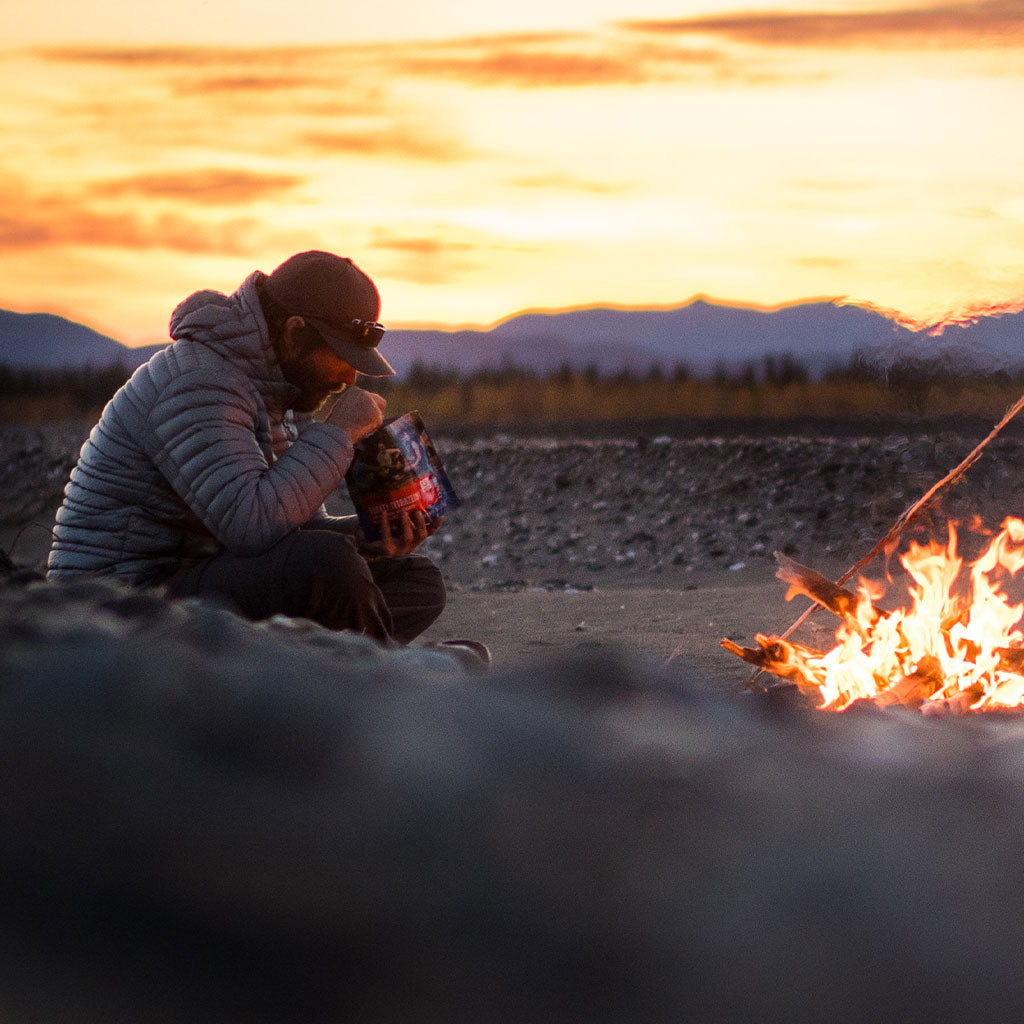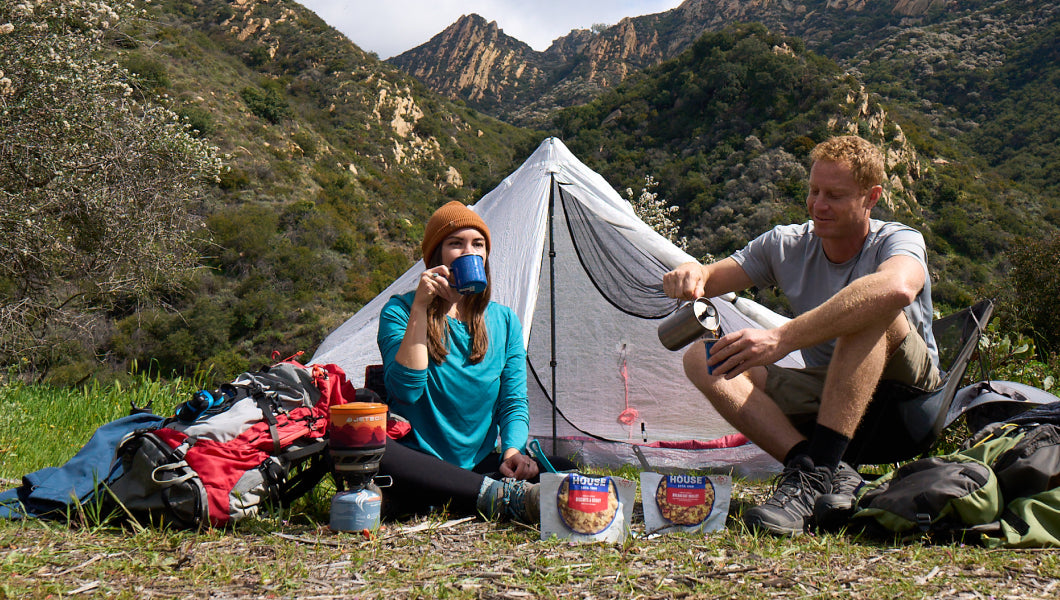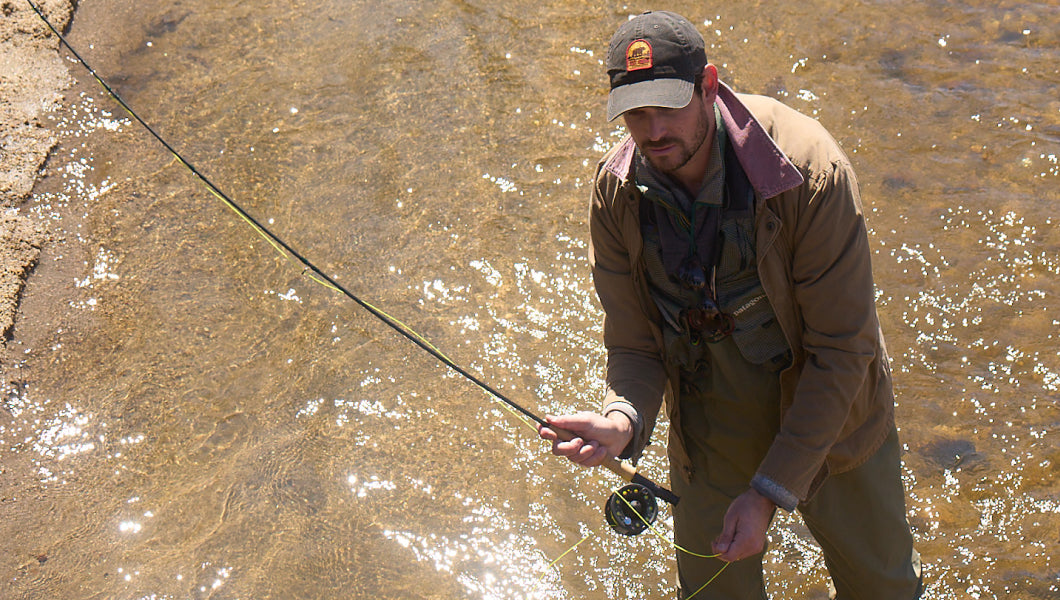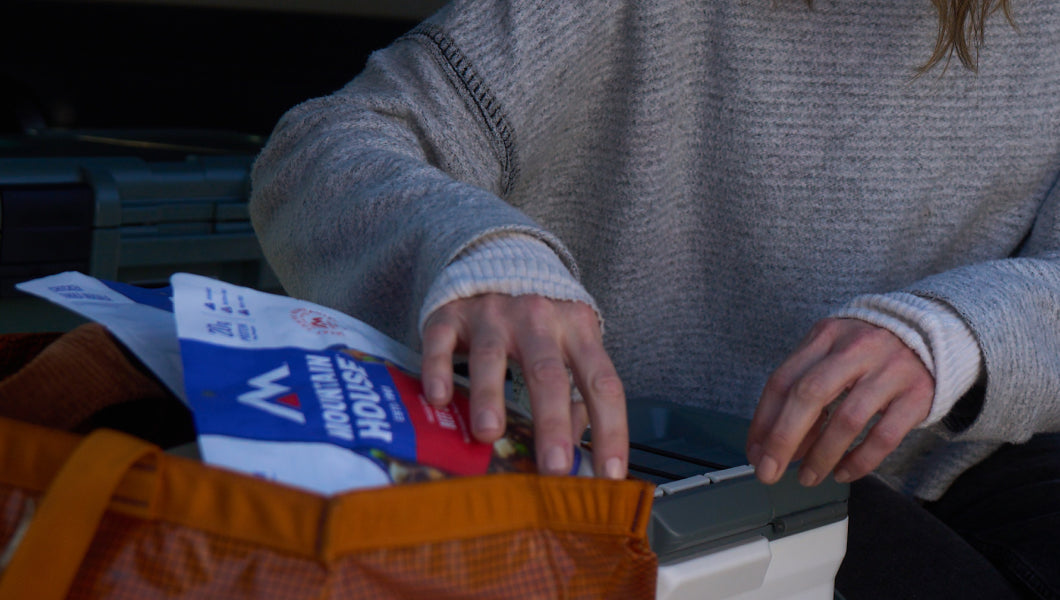Inspired for an Adventure? Check out Beef Stroganoff - Pouch and Beef Stew - Pouch
Free Ground Shipping On All Orders
Over 2,100 Reviews
Add description, images, menus and links to your mega menu
A column with no settings can be used as a spacer
Link to your collections, sales and even external links
Add up to five columns
Add description, images, menus and links to your mega menu
A column with no settings can be used as a spacer
Link to your collections, sales and even external links
Add up to five columns

Hiking and Backpacking Meal Plan
Whether you’re hitting the trail for a day hike or a week-long backpack, your food plan is vital to keeping those hoofing-it muscles of yours going and your all-around spirits up.
We’ve written here lately at the Mountain House blog about how to devise a camping meal plan; today we’ll narrow the focus to the backpacking meal plan specifically, with a few words as well about dayhiking cuisine.
Remember, eating’s one of the deepest pleasures of the backpacking experience: Your trail-weary body craves food to an almost spiritual degree—the kind of well-earned, satisfying, pure hunger that a couch-potato or car-commuting day just doesn’t inspire.
And don’t let anybody tell you backpacking food needs to be bland, barebones, exclusively utilitarian fare: There’s no reason you can’t or shouldn’t pursue rich flavors out in the backcountry. The meals don't have to be complex or fancy—indeed, they probably shouldn’t be complex or fancy—in order to taste amazing. Keep in mind, too: Hunger may be the best seasoning, but a wild vista as your mealtime backdrop makes a pretty darn close second.
Fueling Your Adventures
A backpacking meal plan needs to take into account a few fundamental realities. First, you’re likely going to be working harder and expending more energy on a backpacking trip than you typically do back home, so your caloric demands are going to be greater. Your intake will vary based on your weight and metabolism as well as the nature of the hiking you’ll be doing and the season, but in general you’re looking at anywhere from about 3,000 to 5,000 calories per person per day.
Most of this should come from carbohydrates, the body's most ready source of energy. We’re talking pasta, whole grains, potatoes, dried fruit, pita bread, and the like. Proteins—as consumed in meat, beans, nuts, powdered milk, etc.—deliver essential fuel as well. Calorie-packed, slow-to-digest fats aren’t as much the indulgence they are back home out on the trail: Butter, cheese, eggs, and other fatty foods keep you powered up for long stretches.
Of course, another of those realities—the one that intimidates many beginner backpackers—is the fact you need to schlep all that food around on your own two shoulders (though you may well be restocking if you’re on a very long thru-hike). Therefore you’ve got to choose wisely when it comes to the caloric content, bulk, and packability of your ingredients and meals. Roughly speaking, a backpacker will consume 1.5 to 2 pounds of food per day. But study those nutrition facts, as ultimately the calorie benchmark matters more than the weight one. Naturally every backpacker, not just the dyed-in-the-wool ultralighter, wants to minimize pack load, and being strategic about calories is a great way to do it.
Planning Hiking/Backpacking Meals
If you’re backpacking with others, see if the rest of your party wants to collaborate on some of the trip menu. Some groups like to divvy up meal responsibilities, or maybe you’ll just be all pitching in on dinners, say. If you are pooling resources this way, you’ll naturally want to hash out logistical details such as food preferences and allergies ahead of time.
Break down the days of your trip by breakfasts, lunches, dinners, and snacks, keeping that basic daily caloric window in mind. If you’ve got a pretty unvarying trail and itinerary, scheduling day-by-day menus may be as straightforward as randomly dividing up your list of planned meals. More likely for a multiday trek, you’re going to know in advance of longer, harder days and shorter, easier ones, and that should influence meal-planning. Winding down a pound-out-the-miles day, or the evening after a demanding summit hike, you’re going to want something quick and simple to prepare. Breakfast ahead of such a packed, on-the-move day ought to be similarly fast to whip together, and should deliver of a lot of bang for your buck, given the energetic demands in store.
Keep perishability in mind, too—maybe eat those bagels or attend to that cheddar cheese earlier rather than later. (Not an issue, mind you, with Mountain House meals: freeze-dried goodness with the industry’s longest shelf life!)
Organizing the Pack Pantry
Mountain House meals, we’ll note, are as backpacker-friendly as they come on every level—most definitely including the packability level. Not all the food items you may be bringing are so pack-ready as ours, so it’s worth repackaging those bulkier grocery items in more lightweight, space-efficient sealable plastic bags or tight-closing containers.
In larger, labeled bags, you can partition these packaged foodstuffs by meal (all breakfasts together, say) or by day, often the most logical route.
The Rhythm of Meals in the Backcountry
As we alluded to above, you may want to make breakfast a just-add-water bowl of Mountain House Granola with Milk & Blueberries or perhaps an energy bar and dried fruit—something quick and easy to prepare so you can take advantage of cool morning weather or an early start for putting in some quality time on the trail or up the peak. If you’ve got more a leisurely gameplan, then a hot cooked breakfast savored over some instant coffee or tea can be a right-off-the-bat highpoint of the day.
Many backpackers make lunch a casual, snacky sort of affair, enjoyed at some scenic or shady stopover on the trail. Rather than cracking out the stove and cooking something for the midday meal, it’s easier to just reach for the trail mix and dried fruit, or the pita bread and peanut butter, or the jerky and cheese. If you’re taking plenty of snack breaks during the day’s hiking, you may well not really have a formal lunch of any kind.
Once you’ve set up camp, dinner’s a chance to kick back and reflect on the day’s adventures over a warm, nourishing meal. With a Mountain House entrée, there’s no more cooking hassle involved than heating water to a boil.
Day Hiking Eats
A day hiking meal plan needn’t be so rigidly cognizant of weight, nutrition, or perishability: You can bring along just about anything you’re willing to carry. Just remember to pack plenty of snacks: fruits and veggies (an orange or two, sliced carrots or apples), trail mix or granola, cheese and jerky, sunflower seeds and chocolate—you get the picture!
A 5 Day Backpacking Meal Plan
Here’s a sample 5-day backpacking meal plan to use as an inspirational blueprint, tweaked naturally to your own tastes!
Snacks Throughout: trail mix, cheese, granola bars, energy bars, sunflower seeds, hard chocolate
Desserts: Instant cocoa, chocolate-covered almonds, Mountain House Apple Crisp, Mountain House Ice Cream Sandwich, Mountain House New York Style Cheesecake Bites
DAY ONE
Breakfast: Fuel up at that diner near the trailhead!
Lunch: Bagel, powdered hummus, grapes
Dinner: Mountain House Chicken Teriyaki w/Rice
DAY TWO
Breakfast: Mountain House Breakfast Skillet
Lunch: Summer sausage, cheese, almonds
Dinner: Mountain House Chili Mac with Beef
DAY THREE
Breakfast: Mountain House Granola w/Milk & Blueberries
Lunch: Tortilla, powdered hummus, dried figs, summer sausage
Dinner: Mountain House Pasta Primavera
DAY FOUR
Breakfast: Mountain House Scrambled Eggs w/Ham, Red, & Green Peppers
Lunch: Tortilla, cheese, banana chips
Dinner: Mountain House Italian Style Pepper Steak w/Rice & Tomatoes
DAY FIVE
Breakfast: Mountain House Spicy Southwest Breakfast Hash, dried fruit
Lunch: Dried figs, banana chips, almonds

Best Places to Go Winter Wildlife Watching in North America

Exploring the Best Winter Desert Hiking in the Southwest United States


Stay Hungry for Adventure
Sign Up for Delicious Outdoor Meals & Exclusive Offers!


Join the adventure
©2024 Mountain House — All Rights Reserved.
Your Cart is Empty
Continue ShoppingYour Cart
Subtotal
$0.00
EXPRESS PAYMENT METHODS AVAILABLE IN CHECKOUT
Taxes and Shipping Calculated at Checkout














